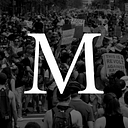Member-only story
The Many Faces of Black Lives Matter
Since its birth in the wake of George Zimmerman’s 2013 murder of Trayvon Martin, the BLM movement has become both giant and dispersed. As Jenna Wortham writes in the New York Times, while critics have called it “disorganized,” this multifaceted approach has been part of its strength, a structure designed “to avoid the mistakes of previous movements, which overemphasized charismatic Black male leaders — and also projected targets onto them, allowing their arrests (or worse, assassinations) to sabotage the work of thousands.”
“Black Lives Matter is an old prayer spoken in new tongues, articulated in a hashtag,” — Mary Hooks, an organizer in Atlanta
Still, many feel that BLM organizations have centered the voices of cishet males. Black Visions, a Minnesota-based collective of “close to 50 members, all Black, almost all of them under 35 and a vast majority queer or trans” has sought to change that. They’re working to counteract anti-Black violence, but they also focus on taking care of the environment, their communities, themselves, and each other. As Wortham writes, “There is a particularly virulent strain of trauma born of the realization that you are beyond the protection of the state, and Black Visions didn’t want to lose sight of that.”

